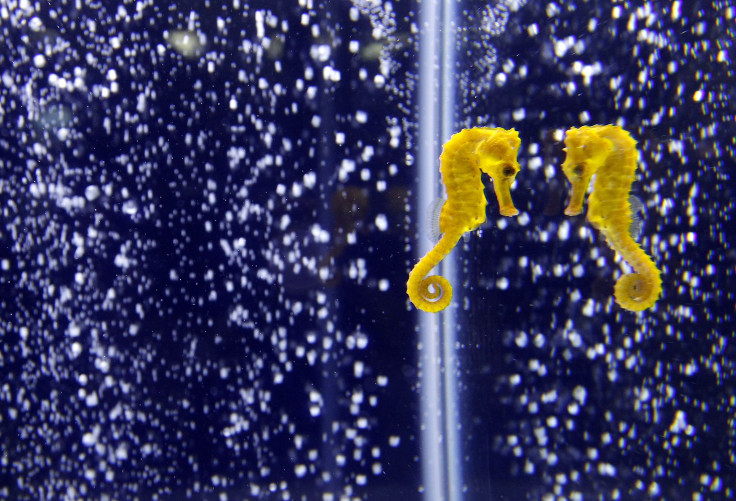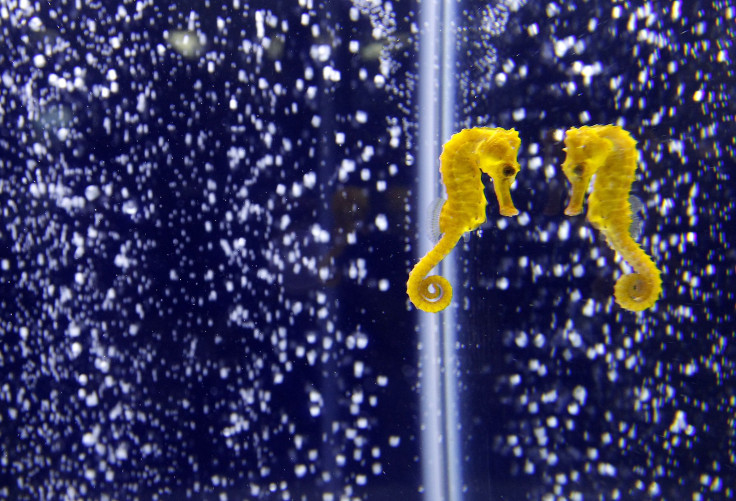Tiger Tail Seahorse Genome Sequencing Helps Understand Evolution Of This Unique Fish

The seahorse is an evolutionary marvel. It is a fish but doesn’t have a tail fin or a pelvic fin, and swims vertically; it doesn’t have any teeth and sucks in food through its pipe-like mouth; bones cover the exterior of its body like armor; and it is one of the only three known families of fish in which the male gets pregnant and gives birth.
So what makes the seahorse so unique? An international team of scientists from University of Konstanz, Germany, along with others from China and Singapore, mapped the entire genome sequence of the tiger tail seahorse (Hippocampus comes), a seahorse variety listed as vulnerable in the IUCN Red List of Threatened Species, to come up with the answer — the loss and duplication of genes.
Scientists found that several genes responsible for the development of teeth in vertebrates, including fish and humans, were lost in the seahorse, since it doesn’t need teeth to chew the food it consumes, given how its snout-shaped mouth works like a vacuum cleaner of sorts. These fish also use their excellent sense of sight (their eyes move independently of each other) when hunting for food, and that has led to the loss of genes that contribute to the sense of smell.
The lack of the pelvic fin, which has the same evolutionary origin as human legs, in seahorses was traced to a missing gene called tbx4. It is found in almost all vertebrates, and to verify their theory, scientists deactivated tbx4 in zebrafish using the Crispr-cas method and found they lost their pelvic fins as well.
The male pregnancy aspect was explained through gene duplication, which was also detected in the evolution process of the seahorse. The researchers said a gene, when duplicated, is capable of performing an entirely new function, and they theorize that it was likely a new gene that made male pregnancy possible, as well as the fact that the baby fish stay in the father’s brood pouch.

The study, published Thursday as the cover story of the Dec. 15 issue of Nature, also said it is not just genetic changes that evolution works through but that it influences genetic switches as well. These are regulatory elements, DNA segments that control the function of genes, some of which change very little during the course of evolution.
However, many such regulatory elements were found to be missing in seahorses, including those responsible for the development of the skeleton in vertebrates.
"This is probably one of the reasons why the seahorse's skeleton has been so greatly modified. It lacks ribs, for example. Instead, its body is armoured with bony plates that add strength and better protection from predators. Additionally, its prehensile curly tail allows seahorses to be camouflaged and remain motionless by holding on to seaweed or corals,” a statement by the Konstanz researchers said.
Seahorses face a threat from being traded, mainly for use in traditional medicine and display in aquaria. Their habitat is also destroyed through coastal development activities and unsustainable fishing practices.
© Copyright IBTimes 2025. All rights reserved.





















